How to be a DIY cook
Learning to cure, smoke and culture your own food might just make the world a better, tastier place.
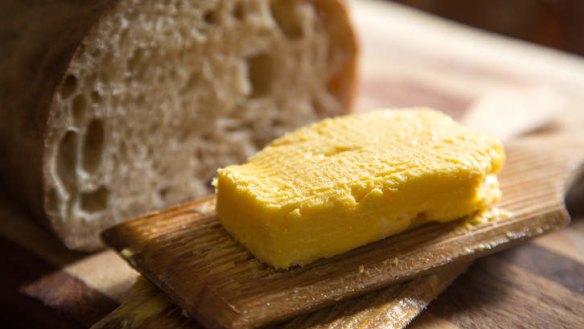
- Kirsten Lawson speaks to Matthew Evans: Turning his back on Big Food
Oh dear. Don't food writers know you're busy? Hot on the heels of the fashionable home garden and edible nature strip movement, comes this. Now we're expecting you to not only grow your own food but to cure it, smoke it and culture it, too?
Well, the good thing is, you don't have to. And the great thing is you can. If you're interested in flavour, in why good butter has a cost attached to it, in why there is variation among naturally air-dried meats, then giving things a go yourself has its benefits. And if you're serious about knowing what you're putting in your mouth, making stuff from scratch is a great a way to go.
Born out of necessity during seasons of plenty, curing, smoking and culturing food is at the heart of any serious cuisine. Cultures that know how to preserve food are cultures that know how to eat. At its base, the transformation of cream into butter, of pork into salami, of milk into cheese, is part craft, part alchemy, part deliciousness. The process of doing it adds not only to your sense of self, but to your understanding of the true nature of the food we eat.
These days, most of us have the luxury to opt in to doing things ourselves. Some do it to save money. Some to avoid putting cash into the hands of ''Big Food''. Some do it because they believe it is better for them, for their family and for their soul. And some of us do it to embellish our lives, in the way only other home curers understand.
There are plenty of people living around the valleys near me, and possibly all over the country, who like to live this way. We enjoy making things from scratch, having a go at crafting the stuff you can find in a deli. These ancient arts are often well within the reach of everybody. All you need to do is pick up a few pointers, grab some quality ingredients and then give it a go.
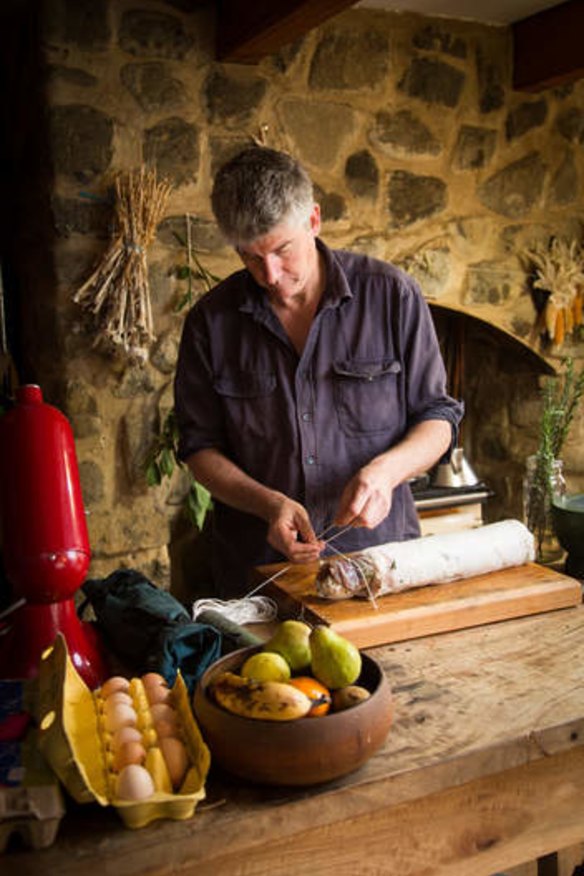
Pancetta
Pancetta is a dry-cured meat that comes from the Italian word for belly, so it's made using the streaky bit of meat you'd find in bacon. I cure whole bellies, but you can do a 1/3 of a belly as a trial run if you like. Just be sure to get quality free-range pork, because you need to start with good meat.
- 1 X 4kg boned out pork belly, skin removed, trimmed of any loose bits
- 2 whole nutmegs
- Leaves from 1 bunch fresh sage
- Leaves from 1-2 sprigs fresh rosemary
- 1 tbsp black peppercorns
- Plenty of sea salt, preferably those without anti-caking agent
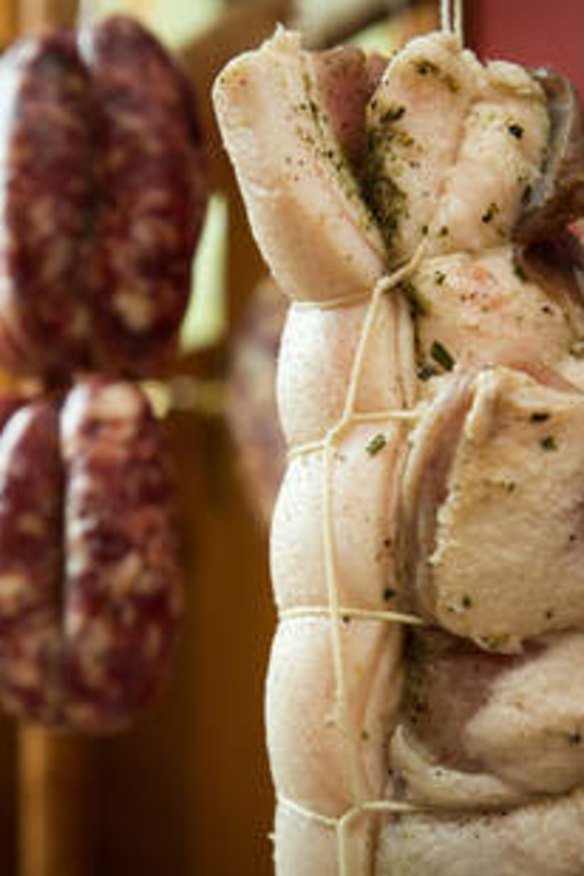
Check the belly is free from bone and cartilage and trim off any straggly bits. Smash the nutmeg, sage, rosemary and peppercorns in a mortar until a coarse mixture results, adding 1 tbsp of salt to help it grind.
Sprinkle some salt over the base of a non-reactive container to about 1cm deep, where you will lay the pancetta. Press half of the herb mix into the meat side of the belly. Lay the belly on the salt bed fat side down, then cover with about 1cm salt. Cover the container and allow the meat to cure for two days. The best temperature is about 15C.
Remove the belly and wash off excess salt. Pat dry, sprinkle the meat side with the remaining herb mixture, roll up with the fat to the outside and tie tightly. Hang in a cool, dark, airy place to cure for about six weeks.
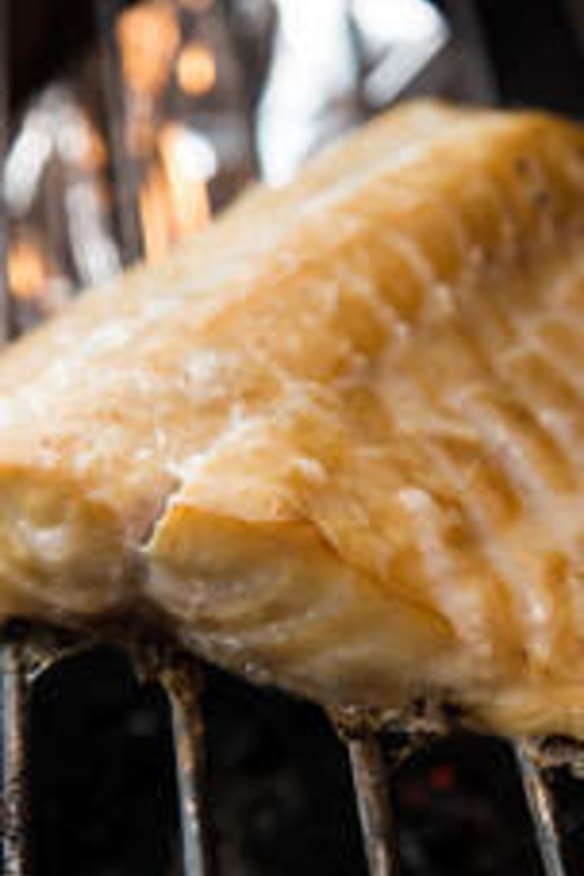
When ready, scrub or slice off any mould and start to slice off as you want it. If you're using it slowly, cut into chunks and either cryovac or put in plastic bags with a little greaseproof lining and store in the fridge. Do cut off or wash off any errant moulds.
Smoked fish
It's fairly easy to hot smoke fish, though if you don't have an exhaust fan, you may want to use a barbecue or similar. All you need is a heat source and a way to keep the smoke in - it's a very imprecise thing, one you'll learn more about every time you give it a crack. I've given a simple recipe for smoking fish using a wok. You'll need a cake rack or similar that fits inside the wok and a lid or a bowl that can be used to hold the smoke in.
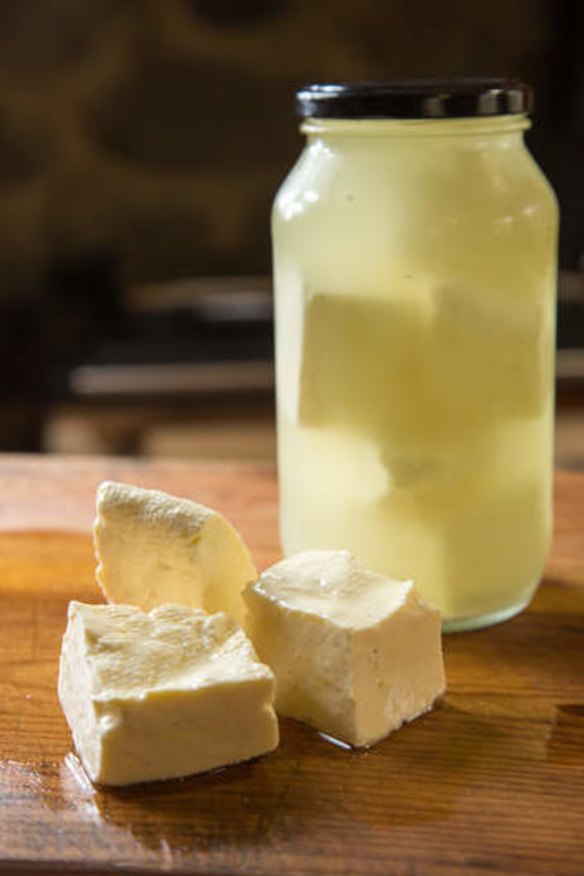
The brine
The best brines for fish are about 10 per cent salt. That means you would use about 100g of salt dissolved in every 1 litre of water. This brine can cure small fillets in a few hours or overnight for fatter fillets.
- 1.25 litres water
- 125g sea salt
- 2 tsp brown sugar
- 1-2 slices lemon
- 500g fish, try some blue eye fillet as a starting point
Mix the water, salt, sugar and lemon together well, heating the water if necessary to dissolve the salt and sugar. Cool before using. Immerse 2cm thick fillets or whole plate-sized trout in brine for about four hours before draining, patting dry and hot smoking. Bigger fish may take longer. When ready to smoke in the wok, lay the fish on a lightly oiled cake rack or similar that fits easily inside the wok.
Tea smoking mixture
- 4 tbsp fine black tea (the sort you'd use to make builder's tea)
- Zest of 1/4 orange or equivalent dried mandarin peel from an Asian grocer
- 1/2 cinnamon quill, crumbled up
- Mix up the tea, rind and cinnamon.
To smoke the fish, line the base of a wok with foil and heat for about 10 minutes over a very high flame. Add the tea mix to the wok and quickly put the rack over the top. Leave the heat on, then pop on the lid or cover with a bowl, sealing gaps with foil if need be, and smoke the fish for about 10 minutes or until the fish is cooked. The fish may not look well-coloured from the smoke but it will have taken up the flavour. Allow to cool on the rack before removing and flaking through a salad, or mixing through mash or making into fish pie.
Feta cheese
(Makes about 800g)
This recipe is adapted from one my cheesemaker mate Nick Haddow put in The Gourmet Farmer Deli Book. I've simplified it a bit and made it using cow's milk, but you can do exactly the same using goat's milk. You really do need a thermometer to make it, and be sure to use sterile implements and bowls at all times.
- 5 litres unhomogenised milk
- 2 tbsp live natural yoghurt
- 1.25g (1/4 tsp) rennet whisked into 250ml boiled then cooled water
- About 5 tbsp (100g) salt
- Clean muslin (cheesecloth) or use a brand-new Chux
Heat the milk in a large saucepan over a low flame, stirring regularly to prevent it from catching, until it reaches 32C. You want to keep it close to 32C for as long as possible, so half-fill an Esky or the sink with warm water and sit the pot in it.
Add the yoghurt and mix to combine, then allow to sit for one hour.
Add the rennet mixture to the milk and stir thoroughly for three seconds. Use your spoon or whisk to stop the milk from moving (you need it completely still while the rennet is working). Cover and leave in the Esky for 8-12 hours, or overnight. Do not disturb during this time.
Once the curds are set, use a long knife such as a bread knife to cut the curd into 1cm squares by slicing vertically in one direction, then again at right angles. Then hold your knife at an angle and cut through the curd as much as you can from the side to create roughly 1cm cubes or equivalent.
Allow the curds to sit for 10 minutes, then gently stir the curds to stop them from knitting back together, stirring with a spoon every five minutes for the next 30 minutes. Line a colander with a few layers of muslin, leaving enough to cover the top of the cheese, drain the curds through it and wrap the cheesecloth over the top.
Put a plate on top that will cover most of the cheese and top with about 1kg of weight. I use a jar of tomatoes from the pantry. Leave overnight, then cut into cubes and brine.
To make a brine solution, mix together the salt and 1.5 litres of water, stirring to dissolve the salt. Pop the cheese in a sterile jar, top up with brine and leave for a day before using. The cheese should last a week or two, and will get saltier with time.
(Rennet is available from cheesemaking suppliers, such as Cheeslinks online. You can try to use unflavoured junket tablets, but I found them tricky. If you do use them, follow the setting instructions on the pack.)
Cultured butter
Good butter, made fresh, has a luscious flavour not found in the commercial stuff. I've given my method for cultured butter, the style that traditionally isn't salted. You can make a salted butter by omitting the yoghurt and just whipping cream straight away, then adding salt after the butter has been washed.
- 1 cup (250ml) cream
- 1 tbsp natural, live yoghurt
Whisk the cream and yoghurt just enough to get the yoghurt evenly dispersed. Leave it on the bench, covered with plastic wrap, overnight. About 12 hours is good.
Chill, then whisk the cream (it's best done using a k-beater, not a whisk, on a freestanding mixer) until it goes past whipped cream to looking split. Keep beating, but possibly turn down the mixer, until the grainy bits start to clump and form solids. This process will take longer with cultured cream, than with fresh cream.
When the butter starts to clump together quite well, remove the beater and use a firm spatula or a wooden spoon to press the butter fat together - a pale, milky substance will come out; this is buttermilk.
Drain the buttermilk off (and use it to bake into scones or cake) and keep pressing the butter against the side of the bowl, turning it over and pressing out beads of buttermilk. It's important to have the bowl tilted at this point so the buttermilk can drain to one side. Keep tipping off this buttermilk and using the spatula to knead out more of it. When the butter looks pretty good and has stopped weeping buttermilk, add about two tablespoons of cold water to the bowl and keep folding and pressing the butter to wash out the remaining buttermilk. If you don't do this, the butter will start to go cheesy within a day or two of being made.
I wash the butter like this for about five minutes in three changes of water. Then press it well to dry, using a corner of absorbent paper to snaffle the last drops of water. Chill this butter a bit before trying to shape, or simply scrape into a sealable butter container. Fresh butter will need to be used quite soon or kept refrigerated. Try it on plain toast, homemade crumpets (seriously yum) or on banana bread.
Comment of the week
The comment on this story judged to be the best by the goodfood.com.au editor will be published in The Feed in the Epicure and Good Food print sections next Tuesday and win $100 in prepaid cards courtesy of eftpos. Comments will close on this story at 4pm AEST Tuesday.
Comments now closed.
The best recipes from Australia's leading chefs straight to your inbox.
Sign up